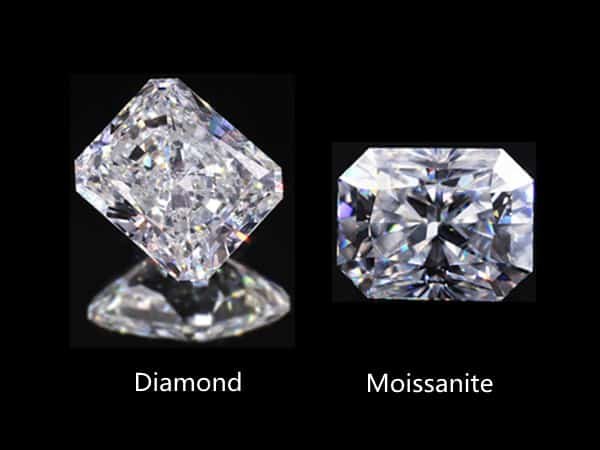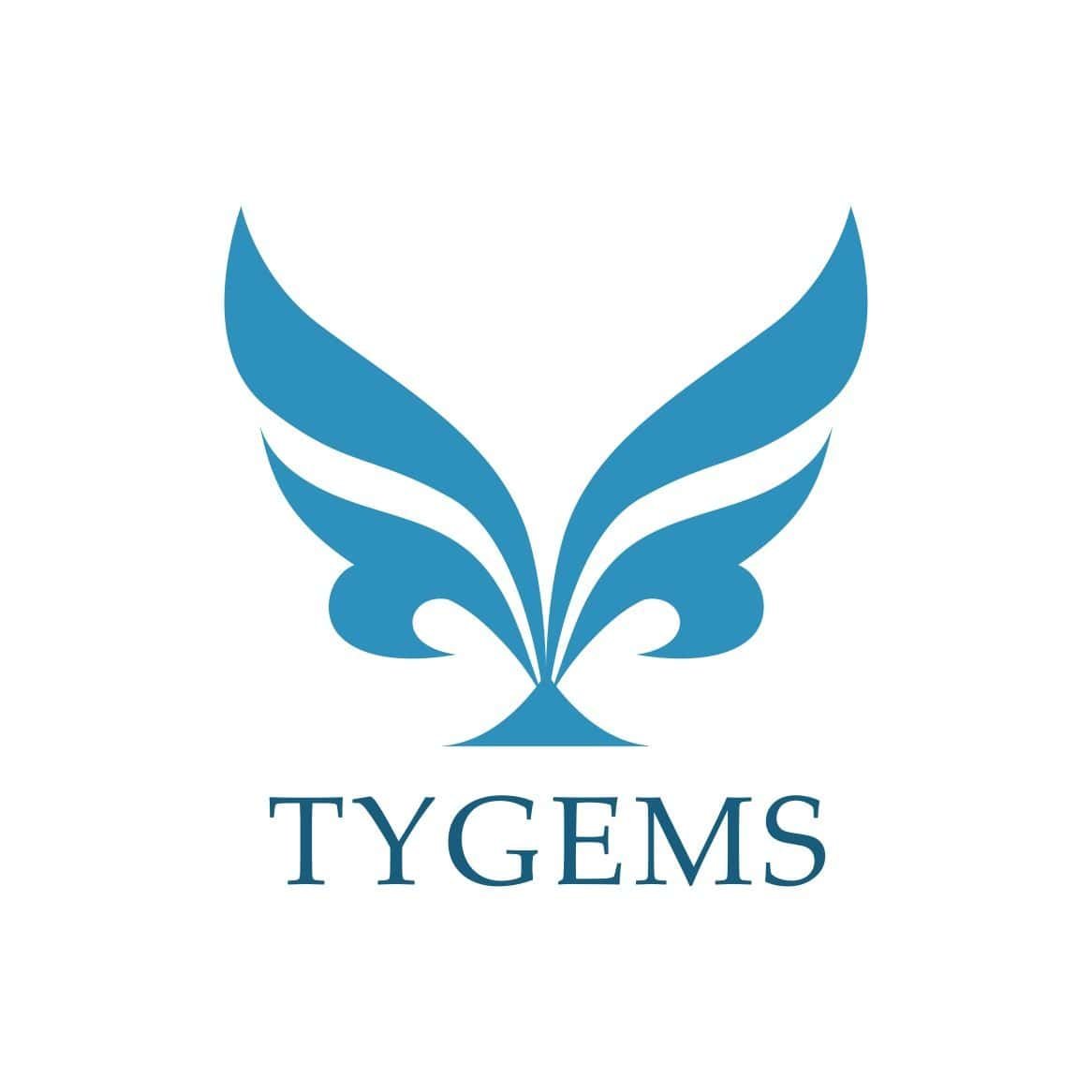Diamonds have long been considered the epitome of luxury when it comes to engagement rings and fine jewelry. However, in recent years, moissanite has emerged as a popular alternative to diamonds due to its unique properties and affordability. If you’re in the market for a sparkling gemstone but can’t decide between moissanite and diamond, this article will help you understand the key differences between the two, so you can mcake an informed decision.
What is Moissanite?
Moissanite is a gemstone that was first discovered in 1893 by French scientist Henri Moissan in a meteor crater in Arizona. It is a rare and naturally occurring mineral, but most moissanite available in the market today is lab-created. Moissanite has a remarkable brilliance and fire, which refers to its ability to reflect and refract light, resulting in a dazzling display of rainbow-colored flashes. Its brilliance and fire are even higher than that of a diamond, making it an excellent alternative for those who desire maximum sparkle.. It is composed of silicon carbide and has a hardness rating of 9.25 on the Mohs scale, making it one of the hardest gemstones, second only to diamonds.
What is Diamond?
Diamonds are a form of carbon that is crystallized under extreme heat and pressure deep within the Earth’s mantle. They are then brought to the Earth’s surface through volcanic activity. Diamonds are known for their unmatched durability, brilliance, and rarity. They have a hardness rating of 10 on the Mohs scale, making them the hardest gemstone.
Differences between Moissanite and Diamond
When it comes to choosing between moissanite and diamond, there are several key differences to consider.
Appearance: Moissanite vs. Diamond
Moissanite and diamonds have similar appearances, and it can be difficult to tell them apart with the naked eye. Both gemstones exhibit exceptional brilliance and fire, which are the properties that give them their sparkle. However, there are some subtle differences in their appearance that can help you distinguish between them.
Brilliance: Both moissanite and diamond are known for their exceptional brilliance and sparkle. However, moissanite has a higher refractive index than diamond, which means it exhibits even more brilliance and fire than diamond. This can make moissanite appear slightly more sparkly and vibrant compared to diamond, which may appeal to those who prefer a more dazzling and eye-catching gemstone.
Color: Diamonds are graded on a color scale, with the most valuable diamonds being completely colorless. However, diamonds can also come in various colors, such as yellow, brown, pink, and blue, known as fancy colored diamonds. Moissanite, on the other hand, typically has a slight yellow or greenish tint, although it can also be found in colorless or near-colorless options. Some people may prefer the slight color of moissanite for its unique charm, while others may prefer the pure colorless appearance of a diamond.
Clarity: Both moissanite and diamond can be found with varying degrees of clarity, with the most valuable gemstones being those with little to no visible inclusions or blemishes. However, moissanite is generally considered to be more “eye-clean” than diamond, meaning that it has fewer visible inclusions to the naked eye. Diamond, being a natural gemstone, can have inclusions and blemishes that are visible under magnification, which may or may not be desirable depending on personal preferences.
Size and Shape: Both moissanite and diamond are available in various sizes and shapes, including round, princess, cushion, and emerald, among others. However, moissanite is known for its availability in larger sizes compared to diamond, as mentioned earlier. This means that if you’re looking for a bigger gemstone for your jewelry, moissanite may offer more options in terms of size and shape.
Durability and Maintenance: Moissanite vs. Diamond
Durability and maintenance are essential factors to consider when choosing a gemstone for jewelry, as it can affect the longevity and wearability of the piece. Let’s compare the durability and maintenance of moissanite and diamond.
Hardness: Moissanite has a hardness rating of 9.25 on the Mohs scale, which makes it one of the hardest gemstones and suitable for everyday wear in jewelry. Diamond, on the other hand, is the hardest known gemstone, with a hardness rating of 10 on the Mohs scale. This means that diamond is slightly more durable and resistant to scratches compared to moissanite. However, both moissanite and diamond are considered to be highly durable gemstones that can withstand everyday wear and tear.
Maintenance: Moissanite and diamond both require regular maintenance to keep them looking their best. Both gemstones can be cleaned with mild soap and water, or with jewelry cleaning solutions specifically designed for gemstones. However, moissanite may require more frequent cleaning compared to diamond due to its higher refractive index, which can cause it to attract more dirt and oils. It’s also important to note that moissanite is not as resistant to heat as diamond, and exposure to high heat can potentially damage or discolor moissanite. Therefore, it’s essential to take proper care and avoid exposing moissanite to extreme heat.
Longevity: Both moissanite and diamond are known for their longevity and can be passed down as heirlooms for generations. However, diamond is considered to be a more traditional and enduring gemstone, with a long history of being used in jewelry for centuries.
Cost: Moissanite vs. Diamond
Cost is often a significant factor in the decision-making process when it comes to purchasing gemstone jewelry. Let’s compare the cost of moissanite and diamond to understand how they differ in terms of affordability.
Price: Moissanite is generally more affordable than diamond. Due to its lab-created nature, moissanite can be produced at a lower cost compared to mined diamonds, which require extensive mining and cutting processes. As a result, moissanite is often priced at a fraction of the cost of a comparable diamond, On average, moissanite costs about 10-15% of the price of a comparable diamond of the same size and quality. This makes moissanite an attractive option for those on a budget or looking for a more cost-effective alternative to diamond.
Size: Another factor that affects the cost of gemstones is size. Moissanite is typically available in larger sizes compared to natural diamonds, as it can be grown in a controlled environment without the limitations of natural diamond formation. This means that you can get a larger moissanite gemstone for the same price as a smaller diamond, making moissanite an appealing choice for those who prefer a bigger and more impactful gemstone without breaking the bank.
Value Retention: It’s important to note that while moissanite is more affordable than diamond, it may not hold its value as well as diamond over time. Diamond is a rare and finite resource, and its value is generally stable or even appreciates over time. On the other hand, moissanite is a lab-created gemstone, and its value may not retain as well in the long run. However, this may not be a significant concern for those who prioritize budget-friendliness and are looking for a stunning gemstone at an affordable price.
Ethical Considerations: Moissanite vs. Diamond
Ethical considerations are increasingly becoming an important factor for many buyers when it comes to choosing gemstones. Let’s compare the ethical aspects of moissanite and diamond.
Environmental Impact: Diamond mining can have significant environmental impacts, including habitat destruction, deforestation, soil erosion, and water pollution. Additionally, the energy-intensive process of diamond mining can contribute to carbon emissions and climate change. In contrast, moissanite is created in a lab using minimal environmental resources, making it a more eco-friendly option.
Social Responsibility: Diamond mining has been associated with ethical concerns such as labor exploitation, unsafe working conditions, and human rights violations in some regions. In contrast, moissanite is a lab-created gemstone that does not involve any labor or human rights concerns. This makes moissanite a more socially responsible choice for those who prioritize ethical considerations in their purchasing decisions.
Conflict-Free: Another ethical consideration when it comes to diamonds is the issue of conflict or blood diamonds, which are diamonds that are mined in war zones and sold to finance armed conflict against governments. These diamonds are often associated with human rights abuses and are prohibited by the international community. Moissanite, being a lab-created gemstone, is inherently conflict-free, eliminating any ethical concerns related to the sourcing of the gemstone.
Customization and Availability: Moissanite vs. Diamond
Diamonds have been the traditional choice for engagement rings for decades, which means they are widely available in various shapes, sizes, and cuts. However, moissanite is gaining popularity, and as a result, there is a growing demand for moissanite jewelry, including engagement rings.
Moissanite is available in a wide range of shapes, including round, princess, cushion, emerald, and oval, among others. This gives you a variety of options to choose from based on your preference and style. Additionally, moissanite can also be custom cut to create unique and personalized jewelry designs.
Diamonds, on the other hand, are available in a wider range of shapes, including many fancy shapes such as marquise, pear, and heart, which may offer more options for customization. However, custom-cut diamonds can be more expensive compared to moissanite.
Care and Maintenance: Moissanite vs. Diamond
Both moissanite and diamonds are relatively low-maintenance gemstones, but there are some differences in how they should be cared for.
Moissanite is a durable gemstone that is resistant to scratching and chipping, but it can still accumulate dirt and oils from everyday wear. To keep your moissanite jewelry looking its best, regular cleaning with mild soap and water, or using a jewelry cleaner specifically formulated for moissanite, is recommended.
Diamonds, on the other hand, can also accumulate dirt and oils, but they are more resistant to scratching and chipping compared to moissanite due to their higher hardness on the Mohs scale. However, it is still important to clean your diamond jewelry regularly using mild soap and water or a diamond-specific jewelry cleaner to maintain its luster and brilliance.
Conclusion
In summary, both moissanite and diamonds are popular choices for engagement rings and other jewelry, but they have some key differences. Moissanite is a lab-created gemstone that offers high brilliance, affordability, and ethical/environmental benefits, but may not have the same prestige and tradition associated with diamonds. Diamonds, on the other hand, are natural gemstones known for their durability, rarity, and classic appeal, but can be more expensive and may raise ethical concerns.
When choosing between moissanite and diamonds, it ultimately comes down to personal preference, budget, and individual values. Consider factors such as the 4Cs (carat weight, color, clarity, and cut), brilliance, affordability, ethical/environmental considerations, customization options, and care/maintenance requirements to make an informed decision.









